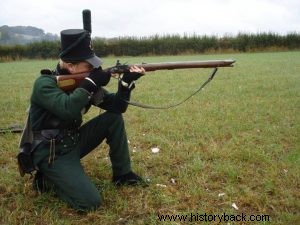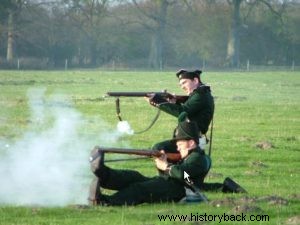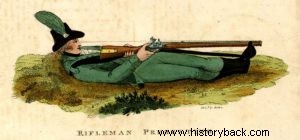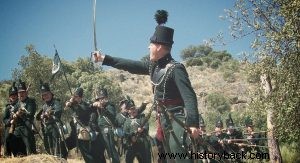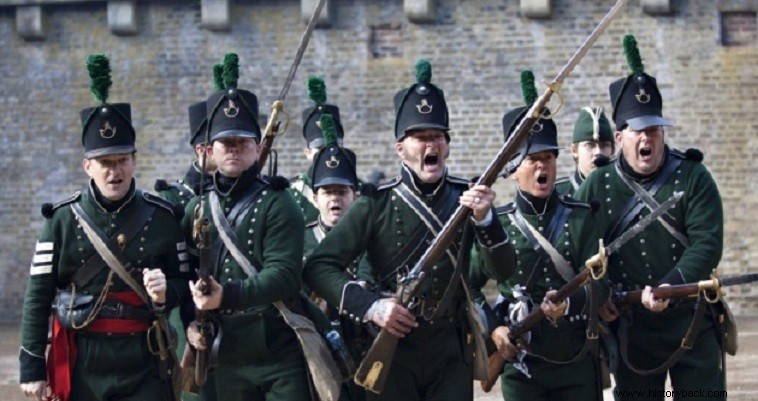
The British learned at great cost in blood the value of rifled rifles during the American Revolutionary War. In 1800 Ezekiel Baker's design was chosen to equip the Experimental Rifle Corps.
During the tests 12 shots were fired of which 11 hit the target, a 1.8 m diameter round wood at a distance of 270 m. This was followed by the production and evaluation of various models from 1800 to 1837, by various manufacturers, but always with the name Baker rifle. The rifle weighed about 4 Kg and had a caliber of 15.9 mm.
The weapon made its own history with the British Army mainly in the Napoleonic Wars equipping the elite 95th Regiment, known as the Rifles, the light battalions of the King's German Legion and elite companies or battalions of other regiments – the 5th Battalion of the 60th Regiment, the elite sniper companies of the 6th and 7th Battalions of the 60th Regiment, the 23rd Fusilier Regiment and the sharpshooters of the other battalions of the King's German Legion. Its most paradoxical user was the 10th Hussar Regiment.
The gun, due to the rifling of the barrel, was more difficult than the common musket to load and consequently had a slower rate of fire. Well-trained men, however, were capable of firing two shots per minute. The common Brown Bess muskets of the British Army achieved, in contrast, twice the velocity. The great advantage of the weapon, however, was its accuracy.
In the hands of an experienced marksman the weapon could hit at distances that the common muskets possessed, mainly by the opponents, could not answer. Rifleman Thomas Plunkett of the 1st Battalion, 95th Rifles is recorded to have hit successfully against the French General Colbert and two of his staff from a distance of 550m at the Battle of Cacampellos in Spain in 1809.
